Pioneer who improved lives of people with diabetes awarded honorary degree

An inventor who vastly improved the lives of people with Type 1 diabetes with a series of innovations has been awarded an honorary degree by UWE Bristol.
Robert Channon received an Honorary Doctor of Engineering degree in recognition of his pioneering work that changed the administration of insulin during the 1970s and 1980s.
The honour was conferred by the University on 17 July at a graduation ceremony at Bristol Beacon, where Robert received a standing ovation. He is among nine people receiving honorary degrees at UWE Bristol graduation ceremonies this month, in recognition of outstanding achievements in their chosen fields and significant contributions to Bristol.
Robert was celebrated for a remarkable career that began with the development of the first programmable insulin pump, allowing different rates of insulin infusion. The compact, battery-powered insulin infusion pump developed in 1979 weighed just three ounces. He later developed the Portaject, the first device that allowed convenient repeated subcutaneous injections of insulin and the forerunner to the Novopen.
Administration of insulin using Robert’s method resulted in improved control of patients’ diabetes and improved prognosis. His work made a significant global contribution to the care and management of people with Type 1 diabetes.
Robert qualified as a marine engineering designer. As an officer in the Merchant Navy he was more familiar with the engines of steam ships than medical devices when he was diagnosed with Type 1 diabetes.
He was referred to Guy’s Hospital under the care of Professor Keen who postulated that he may benefit from a continuous insulin infusion pump which might improve the control of his diabetes.
During his apprenticeship at Charles Hill in the drawing office, at the age of 17 he designed the pump room of ship named the Harry Brown to suck sand from the Bristol Channel. This led to knowledge of fluids and became a natural progression years later to design the first infusion pump.
His academic work in the study of corrosive science stood him in good stead when he later considered the feasibility of a blood glucose sensor which could be linked to an infusion pump.
"To receive this degree is truly a great honour and an enormous privilege. My advice for all graduates and students at the university is that if in doubt, believe in yourself, look closely and scientifically at problems, and postulate how nature resolves them."
Robert Channon
Robert set to work on an old lathe in his garden shed where he designed and built an insulin pump driven by a small compression spring that had the ability to deliver different rates of insulin, therefore providing a background bolus regime of insulin that could be increased or decreased depending on blood glucose levels, often as a function of carbo-hydrate intake.
This concept was unique, the prototype of which is now part of the Bristol Museums Collection.
He tested the device on himself whilst travelling between Bath and Guy’s Hospital in London, researching different infusion systems. His second-generation insulin infusion pump, with the attachment of an interstitial sensor, demonstrated the feasibility of a closed loop insulin delivery system, or artificial pancreas.
He was released from his lecturing role at City of Bath Technical College and seconded to Guy’s Hospital. To enable deaf/blind diabetics to retain their independence he also developed an insulin syringe with an audible and tactile click so that they could safely inject the required dose of insulin.
In the 1980s Robert moved to Bristol Royal Infirmary where he designed and tested in conjunction with Drs Martin Hartog and Richard Paisley the precursor to the Novopen. Robert built the Portaject, the first device to allow convenient repeated injections of insulin to suit carbohydrate intake. Along with a 24-hour background insulin capacity, this had the benefit of improved glycaemic control and in consequence a reduction in co morbidity. The regime, known as background/bolus, has been in use since the early 1980s and has proved to have extended the lives of millions of insulin dependent diabetics worldwide.
Robert’s innate ability to analytically appraise, and his insatiable desire to solve problems or improve situations for his fellow humans, has led to several other inventions. Whether it be unmanned helicopters for the military to detect landmines or robots to save the lives of sewage workers, Robert has contributed.
Robert said: “My association with UWE Bristol spans over six decades, as I attended the forerunner to this university in buildings known as Muller orphanage and obtained my engineering qualifications through this organisation. To receive this degree is truly a great honour and an enormous privilege.
“My advice for all graduates and students at the university is that if in doubt, believe in yourself, look closely and scientifically at problems, and postulate how nature resolves them.”
Related news

24 November 2025
UWE Bristol celebrates achievements of thousands of students at Graduation ceremonies
The academic achievements of nearly 3,000 students will be celebrated this week (24-28 November 2025) as UWE Bristol’s autumn Graduation ceremonies take place at the Bristol Beacon.

30 July 2025
Bristol Pride director awarded honorary degree
Daryn Carter MBE, director of Bristol Pride, has been awarded an honorary degree by UWE Bristol in recognition of his service to the LGBTQ+ community in Bristol.
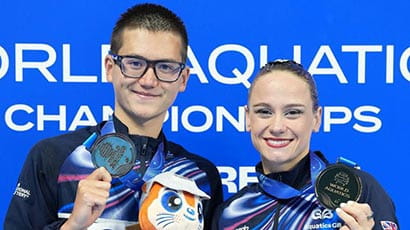
28 July 2025
Student wins bronze medal at World Aquatics Championships on her graduation day
UWE Bristol sports rehabilitation student Izzy Thorpe made waves at the World Aquatics Championships winning a bronze medal in artistic swimming on the same day she was meant to be crossing the stage at her university graduation ceremony.

22 July 2025
Angellica Bell receives honorary doctorate from UWE Bristol
Angellica Bell, a prominent figure on British television and radio, has been awarded an honorary degree by UWE Bristol.

21 July 2025
Fortnight of celebrations begin at UWE Bristol's Graduation ceremonies
The university will celebrate nearly 6,000 graduates at ceremonies running over the next two weeks (21-31 July) at the Bristol Beacon.
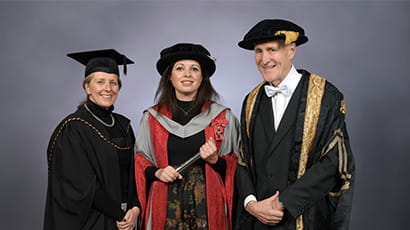
28 November 2024
Entrepreneur and advocate for workplace equality awarded honorary degree by UWE Bristol
Dr Zara Nanu MBE, an innovator in addressing workplace inequalities and tackling the gender pay gap, has been awarded an honorary degree by UWE Bristol.
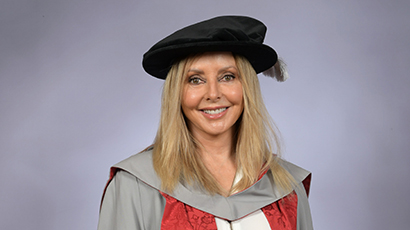
27 November 2024
Carol Vorderman receives honorary doctorate from UWE Bristol
Broadcaster and writer Carol Vorderman MBE has been awarded an honorary degree by UWE Bristol.
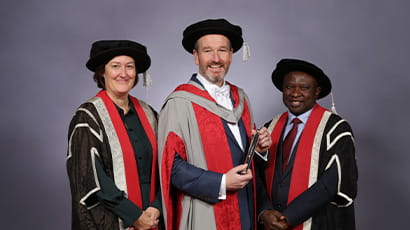
26 November 2024
Bristol learning foundation chief executive awarded honorary doctorate
Steve Taylor, Chief Executive of the Cabot Learning Federation (CLF), has been awarded an honorary doctorate by UWE Bristol.
25 November 2024
Celebrations begin for UWE Bristol’s autumn Graduation ceremonies
Nearly 3,400 students will celebrate their academic achievements at UWE Bristol’s autumn Graduation ceremonies taking place this week (25-28 November) at the Bristol Beacon.
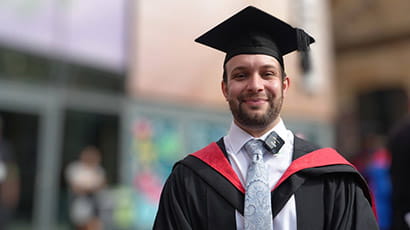
29 July 2024
Student who dedicated his time at university to helping disabled people graduates
A student who has dedicated his time at UWE Bristol to helping people with disabilities has graduated.

25 July 2024
Extraordinary community work recognised with honorary doctorate
Rosa Hui MBE DL, founder of the Chinese Community Wellbeing Society (CCWS), has been awarded an honorary doctorate by UWE Bristol.
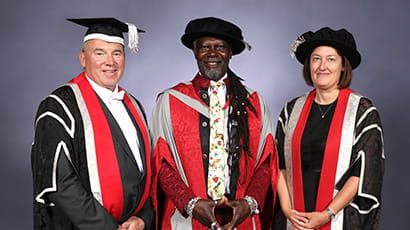
23 July 2024
Entrepreneur Levi Roots shares love for ‘great city of Bristol’ as he collects UWE Bristol Honorary Degree
Entrepreneur Levi Roots has been awarded an Honorary Doctor of Letters by UWE Bristol recognising his commitment to future generations and the city of Bristol.
You may also be interested in

Media enquiries
Enquiries related to news releases and press and contacts for the media team.
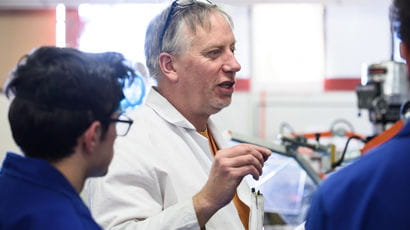
Find an expert
Media contacts are invited to check out the vast range of subjects where UWE Bristol can offer up expert commentary.
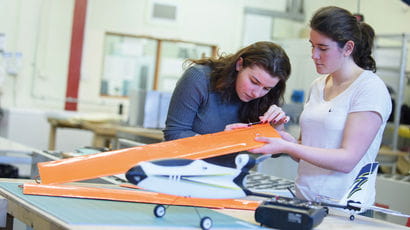
School of Engineering
Our staff work in integrated teams, covering a range of subject disciplines, to deliver programmes of research and study that aim to challenge, enthuse and stimulate, providing you with the best possible positioning for your future career.






